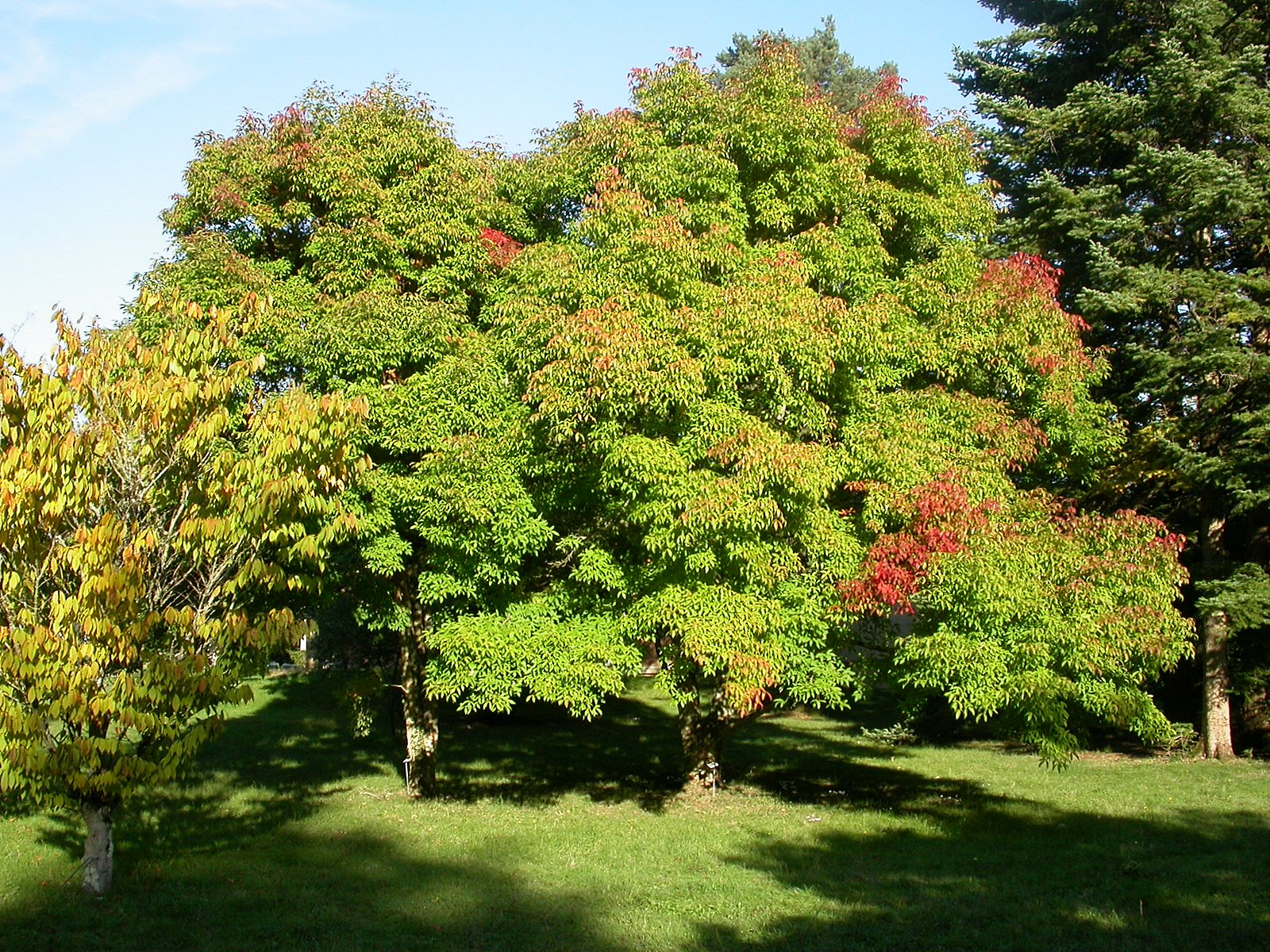- Acer triflorum
taxobox
name = "Acer triflorum"
regnum =Plantae
unranked_divisio =Angiosperms
unranked_classis =Eudicots
unranked_ordo =Rosids
ordo =Sapindales
familia =Sapindaceae
genus = "Acer"
species = "A. triflorum"
binomial = "Acer triflorum"
binomial_authority = Kom.|"Acer triflorum" (Three-flowered Maple) is a species of
maple native to hills of northernChina (Heilongjiang ,Jilin ,Liaoning ) andKorea .It is a
deciduous tree that reaches a height of about 25 m but is usually smallerXu, T.-z., Chen, Y., de Jong, P. C., & Oterdoom, H. J. [http://hua.huh.harvard.edu/china/mss/volume11/Aceraceae-AGH_reviewing.htm "Flora of China": Aceraceae (draft)] ] van Gelderen, C.J. & van Gelderen, D.M. (1999). "Maples for Gardens: A Color Encyclopedia".] . It is a trifoliate maple related to such other species as Manchurian Maple ("Acer mandshuricum") andPaperbark Maple ("Acer griseum"). It has yellowish-brown exfoliating bark that peels in woody scales rather than papery pieces like "Acer griseum".The leaves have a 2.5-6 cm petiole and three leaflets; the leaflets are 4-9 cm long and 2-3.5 cm broad, with serrated margins, the central leaflet the same size as or slightly larger than the two side leaflets. The
flower s are yellow, produced in small corymbs of three small flowers each, hence the name. The samaras are 3.5-4.5 cm long and 1.3-2 cm broad, hairy, the nutlet with a woody shell.Even more than its relatives, three-flower maple has spectacular fall colour that may include brilliant orange, scarlet, purple and gold. It is one of the few trees to develop good fall colour in shade [http://www.ces.ncsu.edu/depts/hort/consumer/factsheets/trees-new/acer_triflorum.html NCSi factsheet: "Acer triflorum"] ] .
Cultivation
The species was first introduced to cultivation in 1923. Although common in maple collections, it is rarely seen in cultivation outside of arboreta.
It grows at slow to moderate rate and prefers moist, well drained soil; growth is often
shrub -like in cultivation. It is relatively tolerant of drought and clay compared to its close relatives. It does not tolerate wet or over-compacted soil. Propagation is similar to that required for "Acer griseum" and the number of viable seeds is likewise very small.In
Great Britain , the largest specimens are up to 13 m tall, and 60 cm trunk diameter (Tree Register of the British Isles). In theUnited States , mature specimens can be seen atArnold Arboretum inBoston, Massachusetts .References
Wikimedia Foundation. 2010.
